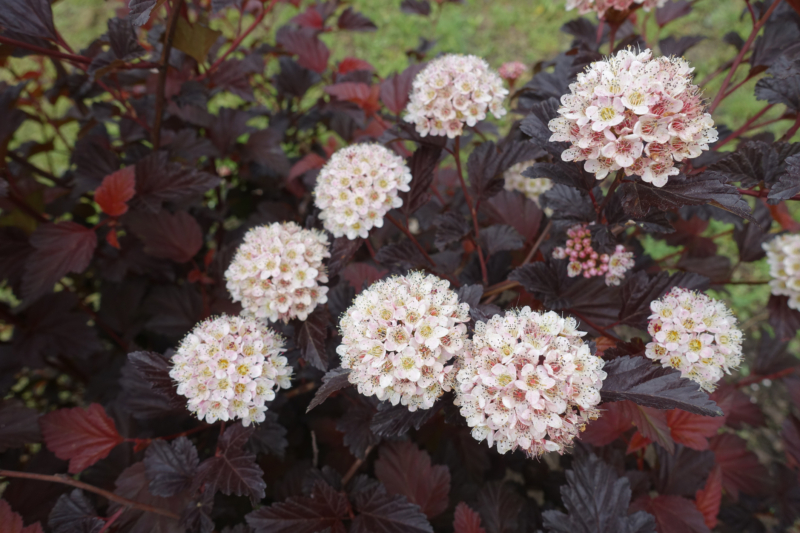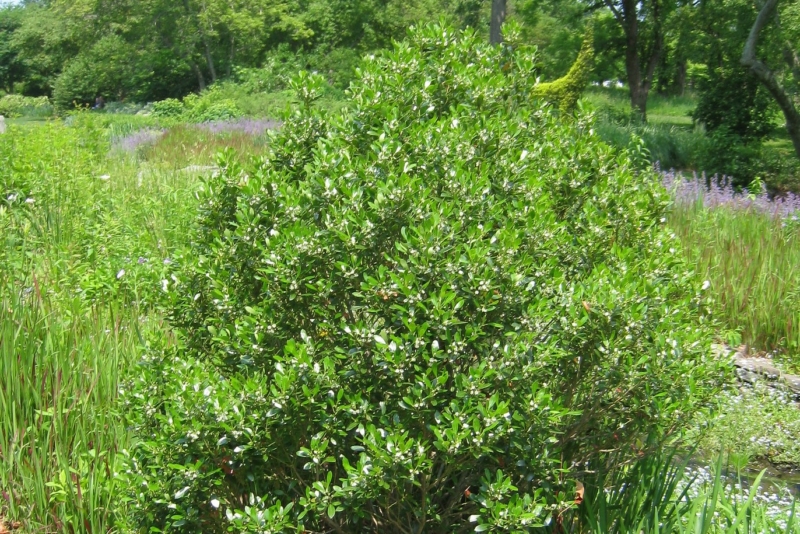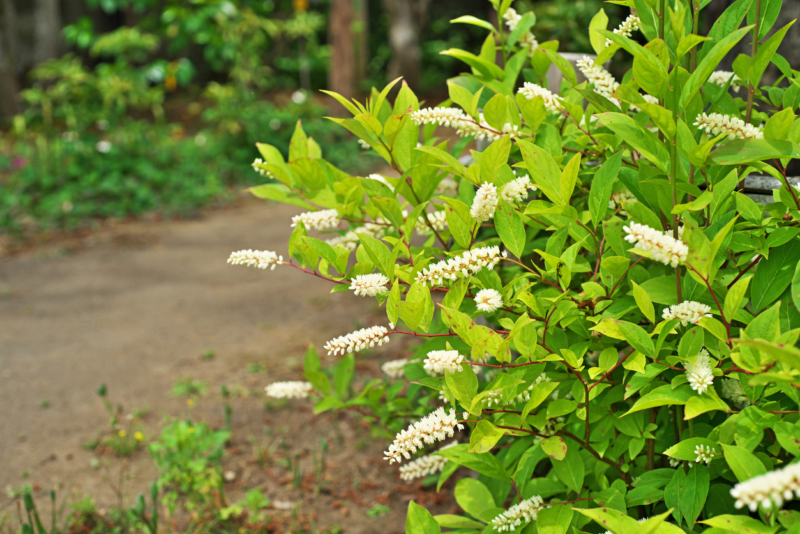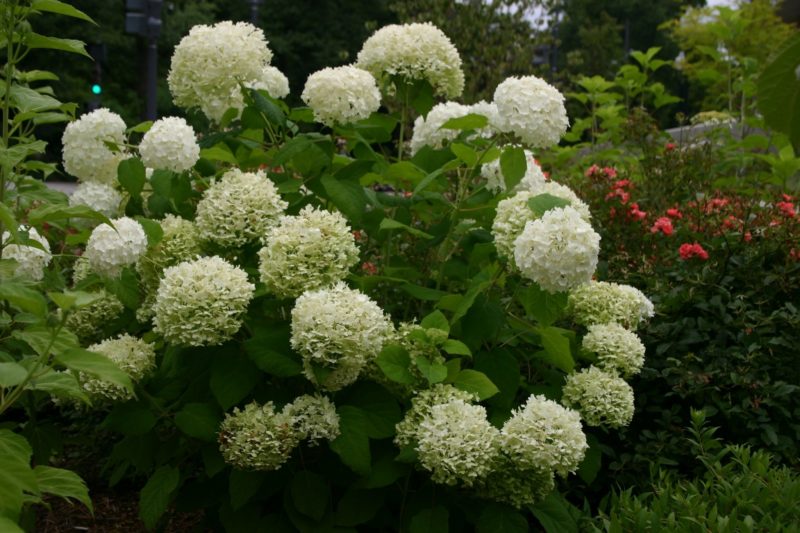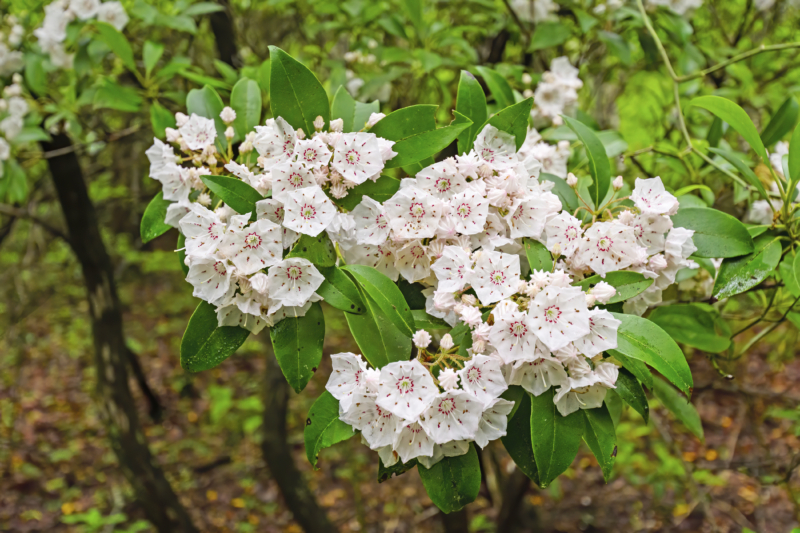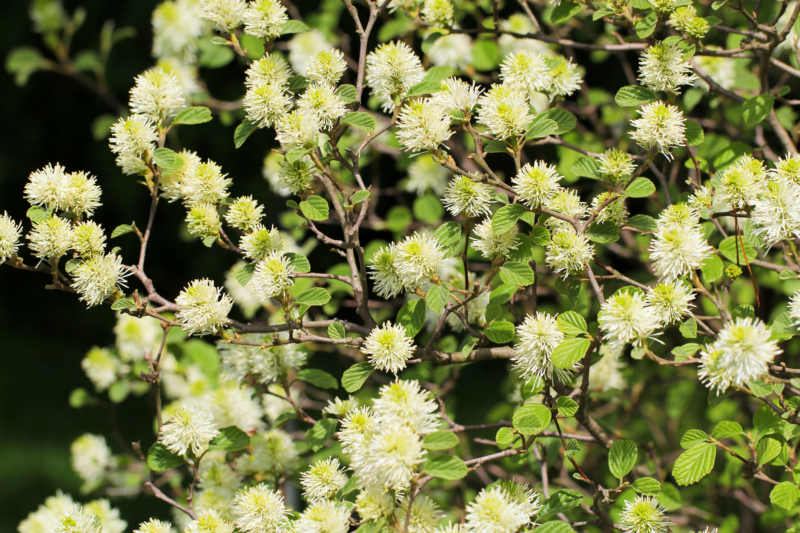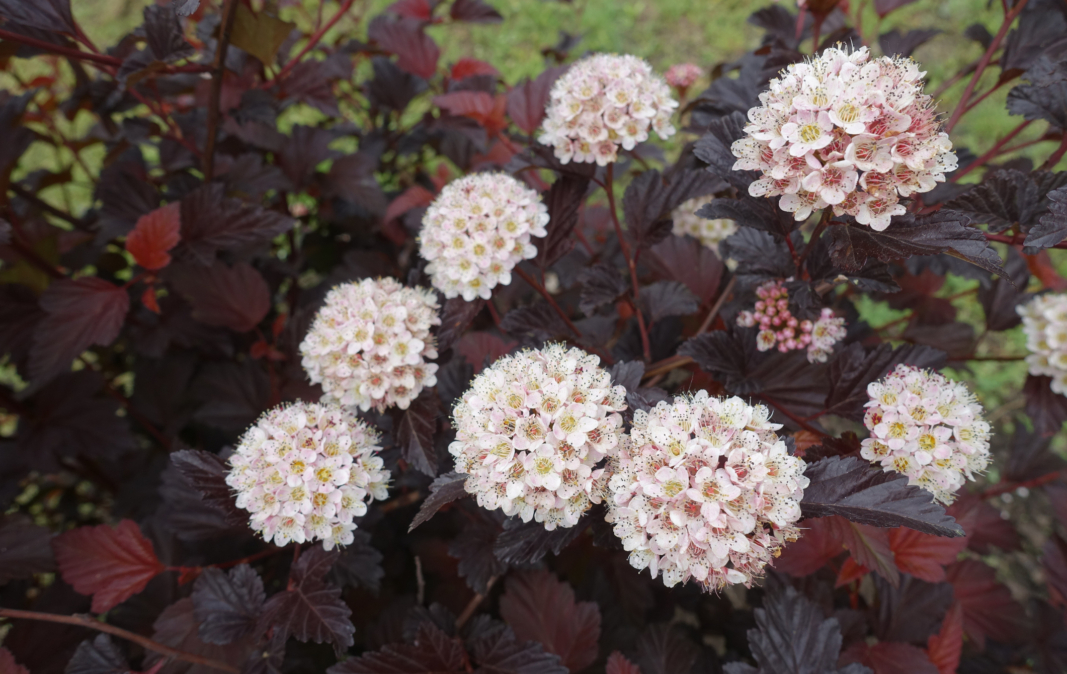
Excellent Native Foundation Shrubs
Serving as the transition point between our gardens and our homes, foundation plantings serve an important purpose in creating curb appeal and complementing your home’s overall appearance. Many of us are familiar with the classic foundation plants – azaleas, boxwood, hydrangeas and more all serve as popular plants to grow around the walls of our homes. If you are interested in some alternative options, and particular in planting natives, there’s great news! There are many native shrubs that make excellent foundation plants.
In this post, we will address some of our favorite natives for sun, part sun, and shade. Many of our native plants are acclimated best to part shade conditions due to our native woodland ecosystem, but there are options for all light conditions.
Foundation Plants for Sunny Areas
Ninebark
This shrub is a great choice to plant in full sun areas (full sun means 6 hours or more of direct sunlight daily). It’s a tough plant that is drought resistant once established and blooms best in full sun conditions, though it will do fine in part sun (4-6 hours of sun). Its blooms are an important source of nectar for pollinators in spring.
Ninebark is deer resistant. Most cultivars have purple, red, orange or gold fall color. The plants bloom on old wood, so you will want to do any pruning right after they finish blooming in the spring.
“Inkberry Holly (Ilex glabra)” by Elsa Spezio is licensed under CC BY-SA 2.0.
Inkberry Holly (Ilex glabra)
If you are looking for evergreen natives to add to your foundation plantings, there are quite a few excellent varieties of native holly, but inkberry is one of our favorites for this purpose. This plant has been cultivated to grow in a number of sizes with the straight native reaching up to 10 ft., so opt for a compact versions such as ‘Gem Box’, which will grow to about 2-3 ft. or ‘Shamrock’, which will grow to 3-5 ft. ‘ if you are looking for a smaller shrub.
With a slow growth habit and rounded evergreen leaves, these plants can serve as a native alternative to boxwood in a hedge or formal planting. Occasional pruning in early spring will help to keep them dense and full. As a bonus, these shrubs produce flowers that are an important source of nectar, followed by fruits that are popular with many local birds. You will need to plant a male and female plant in order to produce fruit. The fruits are not edible for humans.
Foundation Plants for Part Sun
Sweetspire (Itea virginica)
Like many Virginia natives, this beautiful shrub performs best with dappled light throughout the day or with direct sunlight for less than 6 hours. This is a great shrub for areas with poor drainage, as it’s natural habitat is in wet areas and stream banks. Plant it in mass for a beautiful show of blooms.
Blooms occur in the late spring to early summer with showy racemes of small white flowers. Prune this plant after it finished blooming, as it blooms on the previous year’s wood.
Hydrangea arborescens (Smooth Hydrangea)
One of the most popular cultivars of our native smooth hydrangea is ‘Annabelle’, which produces huge clusters of white flowers about inches across in the late spring and summer. This plant prefers part sun and well-drained soil with consistent moisture. Annabelle hydrangeas can reach about 5 ft. in height.
Mountain Laurel
If you are interested in a native evergreen for part shade, select a Mountain Laurel! These plants are beautiful broadleaf evergreens that will retain their foliage through the winter.
Mountain Laurel prefer sun in the morning and shade in the afternoon, but can tolerate a lot of shade. These plants naturally grow on slopes and prefer acidic soil but good drainage.
Foundation Plants for Shade
Fothergilla
This is a shade tolerant, deer resistant plant with aromatic bottlebrush-like blooms and vivid fall color ranging from golds to reds. Talk to a plant specialist if you need help selecting the correct size for your garden. Fothergilla major and Fothergilla gardenii are both natives, with Fothergilla major reaching up to 10 ft. in height and Fothergilla gardenii maxing out at 3-5 ft.
These plants prefer acidic, well-draining soils and look excellent when used in woodland garden style plantings.


